The African Marigold, also known as American Marigold, Aztec Marigold, Big Marigold, or Mexican Marigold, is a vibrant garden favorite from the Asteraceae family. Native to regions from Mexico to Guatemala, this annual plant is prized for its bold, bright blooms in shades of orange and red.
Historically significant, the African Marigold was used in decorative and ceremonial gardens by the ancient Aztecs. Beyond its visual appeal, this hardy plant serves a practical purpose in gardens—it naturally repels insects, rabbits, and deer due to the protective properties of its toxic latex.
Its cheerful presence and pest-repellent benefits make it a must-have for gardeners seeking beauty and functionality in their landscapes.
| Common name | African Marigold, American Marigold, Aztec Marigold, Big Marigold, Mexican Marigold |
| Botanical name | Tagetes erecta |
| Family | Asteraceae |
| Species | erecta |
| Origin | Mexico to Guatemala |
| Life cycle | Annual |
| Plant type | Annual |
| Hardiness zone | 2, 3, 4, 5, 6, 7, 8, 9, 10, 11 |
| Sunlight | Full Sun |
| Maintenance | Low |
| Soil condition | Clay |
| Soil ph | Acid |
| Drainage | Well-Drained |
| Growth rate | Medium |
| Spacing | Less than 12 in. |
| Harvest time | Fall |
| Flowering period | Fall |
| Height | 1 ft. – 4 ft. |
| Flower color | Cream, Tan |
| Leaf color | Green |
| Fruit color | Black |
| Stem color | Green |
| Fruit type | Achene |
| Leaf benefit | Fragrant |
| Flower benefit | Fragrant |
| Garden style | Butterfly Garden |
| Uses | Container |
I. Appearance and Characteristics
Tagetes erecta, the Aztec marigold, Mexican marigold, big marigold, cempaxochitl or cempasúchil, is a species of flowering plant in the genus Tagetes native to Mexico and Guatemala. Despite being native to the Americas, it is often called the African marigold. In Mexico, this plant is found in the wild in the states of México, Michoacán, Puebla, Veracruz and Guerrero.
It is a herbaceous annual or perennial plant whose height ranges from 30–110 cm. The root is cylindrical, pivoting, with a fibrous and shallow branching system. The stem is striated, sometimes ridged, smooth or slightly with villi, cylindrical, oval and herbaceous to slightly woody, with resin channels in the bark, which are aromatic when squeezed.
Opposite leaves at the bottom alternate at the top, up to 20 cm long, pinnate, composed of 11 to 17 leaflets, lanceolate to linear-lanceolate, up to 5 cm long and 1.5 cm wide, acute to acuminate, serrated to sub-holders, the lower ones of each leaf frequently setiform (in the form of threads), the superiors are sometimes completely setiform; with abundant round glands.
The main characteristic of the flowers is that they are grouped in small heads or in solitary inflorescences, on peduncles up to 15 cm long, they are liguladas of yellow colors to red. In the flowers of the disc: 150 to 250 in the simple heads, in the doubles it shows different degrees of transformation in ligules, yellow to orange corollas, of 8 to 10 mm in length. The fruits and seeds are: linear achenes 7 to 10 mm long, smooth or slightly covered with stiff hairs at the corners. It has a long flowering period extending throughout the summer and fall. It reproduces easily by seeds.

It is widely cultivated and there are many cultivars used in gardening as an ornamental plant. The cultivar ‘Inca Orange’ has gained the Royal Horticultural Society’s Award of Garden Merit.
In Mexico, it is used in the festivities of the Day of the Dead, to decorate altars and tombs; hence the name “flower of the dead”. However, since antiquity it is also used for food and medicinal purposes.
II. How to Grow and Care
Sunlight
These annuals will tolerate partial shade but perform their best in full sun. Shady conditions can make the plants very leggy and more prone to toppling over.
Temperature and Humidity
African marigolds prefer hot, dry conditions; they are heat and drought-tolerant, blooming from summer until frost. Cool, damp conditions can encourage fungal diseases and root rot. African marigolds rarely survive beyond the first light frost, and as temperatures dip below 40 degrees Fahrenheit, the end is near.
Watering
Water your African marigolds regularly—the standard one inch per week guideline works well for these plants. Do not overwater them because if the soil isn’t well drained, the plants are at risk of drowning or developing root rot. It’s fine for soil to dry out completely between watering. African marigolds tolerate dry conditions much better than French marigolds.
Soil
African marigolds are adaptable to many kinds of soil and are known to perform well in poor soil. For best results, new plants require well-draining and fertile soil. Moist sand or loam is ideal, though it’s possible to grow African marigolds in both dense clay and dry, gravelly soil.
In poor soils, add compost or other organic, nutrient-rich materials at planting time. Maintain a soil pH of 6.0 to 7.5. African marigolds dislike very acidic soil, and anything below 5.8 is likely to cause poor performance.
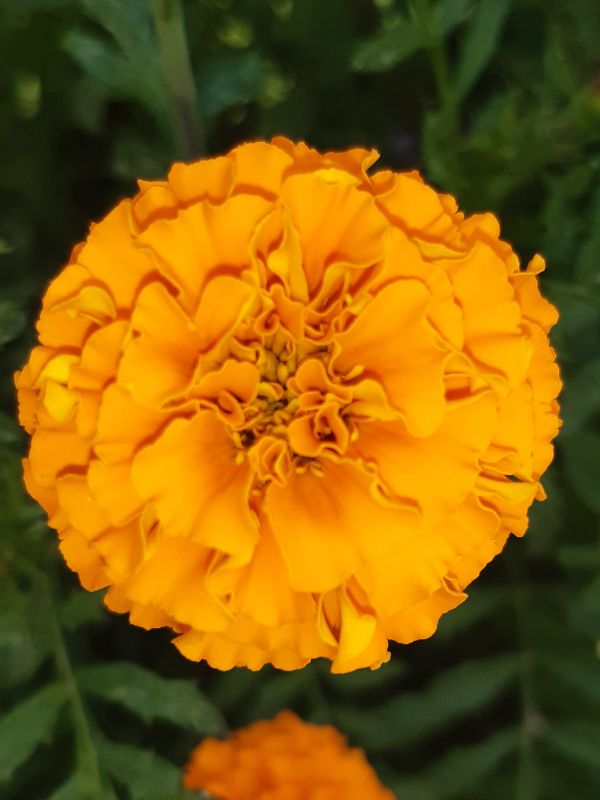
Fertilizing
African marigolds generally do not need much, if any, fertilizer if they are growing in reasonably good soil. In very poor soils, they can benefit from blending in some slow-release fertilizer at planting time or with a few feedings of a diluted liquid fertilizer over the course of the growing season. For the amount to use, follow the product label instructions. A formulation relatively low in nitrogen, such as 5-10-5, is best.
Pruning
Left alone, African marigolds tend to shoot upward and can become top-heavy, so it’s common to pinch back the tips when the plants are young to encourage side branching and denser growth.
Deadhead plants regularly to encourage a longer period of flower growth and to prevent flopping. When deadheading, it’s best to clip off the flower stalks down to the next set of leaves. At the end of the season, simply yank the plants from the ground and discard them (or add them to a compost pile).
Propagation
African marigold grows so readily from commercial seed that vegetative propagation is rarely done—it can take longer to propagate cuttings than for seeds to sprout and mature. But if you don’t want to buy new seeds, asexual reproduction by rooting stem cuttings is a way to ensure that you achieve exact duplicates from hybrid varieties growing in your garden. (Seeds collected from flower heads will easily grow, but their genetics can be somewhat different than hybrid parent plants.)
Here’s how to propagate from stem cuttings:
- Using sharp pruners, clip off four-inch segments from the tips of healthy stems, preferably without flowers or buds.
- Remove any remaining flowers and buds as well as the lower leaves on the cutting.
- Moisten the potting mix.
- Plant the cutting in a small pot filled with commercial potting mix.
- Enclose the planted cutting in a plastic bag, and place it in a bright, warm location, but not in direct sunlight.
- Periodically check the cutting to see if roots are forming, and to moisten the potting mix as needed.
- When you feel resistance when gently tugging on the stem, it means the cutting has rooted. At this point, you can remove the plastic bag and continue growing the plant in full sunlight. It can be planted in the garden at any time during the growing season.
How to Grow From Seed
Marigold seeds can be collected from spent flowers to sow the following spring, but because most nursery marigolds are hybrids, the seeds they produce may not come true if planted. Thus, growing marigolds from seed is best done with purchased seeds, which are bred under controlled nursery conditions for precise genetic heritage.
If you are not concerned about the perfect duplication of garden plants, then it’s certainly possible (and quite easy) to harvest seeds by simply breaking apart some dried flower heads. The elongated black seeds inside can be planted and will certainly produce flowering plants, though possibly with a different look than the parent plants.
Sow seeds indoors in small pots or seed trays filled with commercial potting mix four to six weeks before the average last frost date. Place them in an area where temperatures remain between 70 and 75 degrees Fahrenheit and watch seedlings emerge four to 14 days later.
You can also sow the seeds directly in the garden when the danger of frost has passed. These are relatively fast-growing plants that will bloom in about two months when planted from seed.
Potting and Repotting

Marigolds are easily grown in containers filled with standard commercial potting mix. It’s a good idea to blend in some granular fertilizer, or to use a potting mix with fertilizer already added. African marigolds get quite large, so use a large container, at least ten inches in diameter, and deep enough to allow for staking, if needed. Pots can be made of any material—plastic, wood, clay, or ceramic— but heavier materials will help prevent these tall plants from tipping in the wind.
Repotting won’t be necessary because these annuals die at the end of the growing season.
How to Get to Bloom
African marigolds typically bloom from early summer into late fall, and failure to bloom is rare and usually traced to simple explanations:
- Not enough sun. For robust, repeated blooming, make sure African marigolds get plenty of sun—at least six to eight hours per day. Shady conditions make for leggy plants and fewer blossoms.
- Too much fertilizer. African marigolds thrive on relatively meager soils and fertilizing too much causes lots of green foliage but fewer flowers.
Pests and Diseases
Common Pests & Plant Diseases
While African marigolds are not usually prone to pest damage, keep an eye out for Japanese beetles, red spider mites, slugs, and snails. Use insecticidal soap as needed.
Overwatering and wetting the foliage late in the day can lead to fungal infections. African marigolds are susceptible to powdery mildew, botrytis, and various leaf spot and root rots. Plants are best watered through ground-level soaking early in the day. Chemical fungicides can be used, but it’s best to simply remove affected plant parts and make sure plants are watered correctly and have good air circulation, which will prevent most fungal diseases.
Common Problems
Aside from relatively rare problems with fungal diseases and root rot, African marigolds seldom give gardeners cause for complaint. The most common problem is that they are prone to toppling over because the large flowers make the plant top-heavy. You can counter this by pinching back the plants when they are young to make them branch out, by quickly deadheading the spent flowers, and by staking if necessary. It also helps to plant them unusually deep to ensure a robust, strong root system.
III. Uses and Benefits
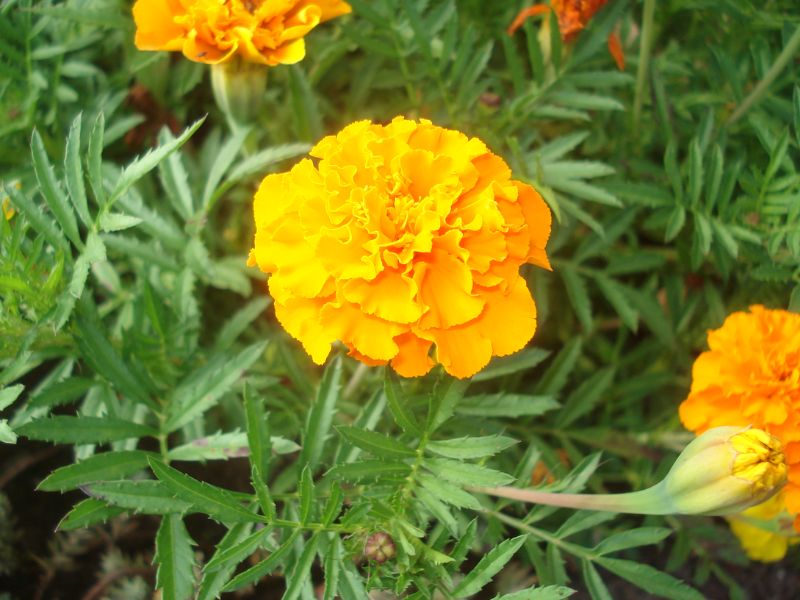
- Ornamental uses
Marigold or Genda flower, the botanical name of which is Tagetes erecta is an ideal flower for the border in a garden, hanging basket or potted house plant.
- Rituals
Its flower, the cempasúchil, is also called the flor de muertos (“flower of the dead”) in Mexico and is used in the Día de Muertos celebration every 2 November. The word cempazúchitl (also spelled cempasúchil) comes from the Nahuatl term for the flower cempohualxochitl, literally translated as “twenty flower”. In Thai it is called ดาวเรือง [DaoRuang] or “dow ruang”, literally translated as “star glittering”. Water infused with the fragrant essential oil of the flower was used to wash corpses in Honduras, and the flower is still commonly planted in cemeteries.
- Medical uses
Since prehispanic times, this plant has been used for medicinal purposes. The Cherokee used it as a skin wash and for yellow dye. The pigments of the erect tagetes are due to the presence of carotenoids, of which the main one is lutein, which is associated with the prevention of the development of age-related eye diseases such as cataracts and macular degeneration. The most intense orange tones of the flowers are related to a higher content of carotenoids, especially xanthophyll. Some studies indicate the effectiveness of the latter in the prevention of coronary artery disease, heart attacks, immune response, old age and cancer.
In some regions of Mexico it is used in digestive ailments, such as stomach pain, as well as diarrhea, colic, liver problems, bile, vomiting, and indigestion. The plant also has a history of use against intestinal parasites and worms with one study indicating that it has a different mechanism than the anthelmintic drug levamisole. Other uses include respiratory diseases such as colds, flu, bronchitis and nasal congestion as well as gynecological problems.
Antioxidant activity has been discovered in the essential oil of this plant although less than that of α-Tocopherol, possibly attributable to the presence of camphor and methyl eugenol. It is most effective against the nematode species Pratylenchus penetrans.
- Culinary uses
The ray florets have been used in lettuce salads and other foods to add colour and flavour. The flowers are rich in carotenoids, and are thus used to make food and feed pigments. The dried flower petals, ground to a powder, are used in poultry feed to ensure a good colouration of egg yolks and broiler skin, especially in the absence of well-pigmented yellow maize in the feed. This is still in use today, but now usually in the form of an extract which may have advantages of lower transport and storage cost, better stability and better utilization. It is also used to enhance colouring in crustaceans, such as the Pacific white shrimp (Litopenaeus vannamei).
- Essential oils
The essential oil of the flower contains antioxidants. It may be added to perfumes to infuse an apple scent into them.
- Dye
It is used as a natural dye on textiles.
IV. Types of African Marigold

Many named cultivars of African marigolds are available, thanks to horticulturalists constantly seeking to create plants with blooms that are larger, with different colors, or different shapes. Dozens of named cultivars are currently on the market with more introduced each year. A few of the more popular cultivars are:
- ‘Jubilee’ features bright, bold yellow ball-shaped blooms adding delicate texture to a garden
- ‘Gold Coin’ offers showy, fragrant double blooms in gold, orange, and yellow
- ‘Safari Tangerine’ has large flat-topped blooms in maroon, yellow, and orange
- ‘Inca Primrose’ offers huge rounded blooms adding height to beds and containers
- ‘Antigua Orange’ offers mounds of small blooms in gold, orange, and yellow
- ‘Crush’ brings a summer glow of tidy yellow blooms, perfect for pots
- ‘Aurora Gold’ produces single or double flowers in shades of orange, yellow, brown, and red
- ‘Double Eagle’ has large, fully double orange blooms
- ‘Sweet Cream’ offers bold and creamy white ball-shaped blooms with a hint of buttery yellow
- ‘Discovery Series’ features adorable dwarfed bushy compact blooms that look beautiful in a fresh-cut arrangement
- ‘Taishan® Gold’ has bold ball-shaped gold blooms with buttery yellow centers
The African marigold (also known as Mexican marigold and American marigold) is just one species among many in the Tagetes genus. For example, this flower shouldn’t be confused with Tagetes lemmonii. Generally known as Lemmon’s Marigold, it is also sometimes referred to by the common name Mexican marigold.
Tagetes patula and its many cultivars are commonly known as the French marigolds. They are generally shorter than African marigolds, with a spreading habit and smaller flowers.
Tagetes tenuifoli (known as signet marigolds) is another large group. These, too, are smaller plants with smaller flowers, and they are much more likely to survive mild frosts.
Find Where to Buy the Best African Marigold (Tagetes erecta)



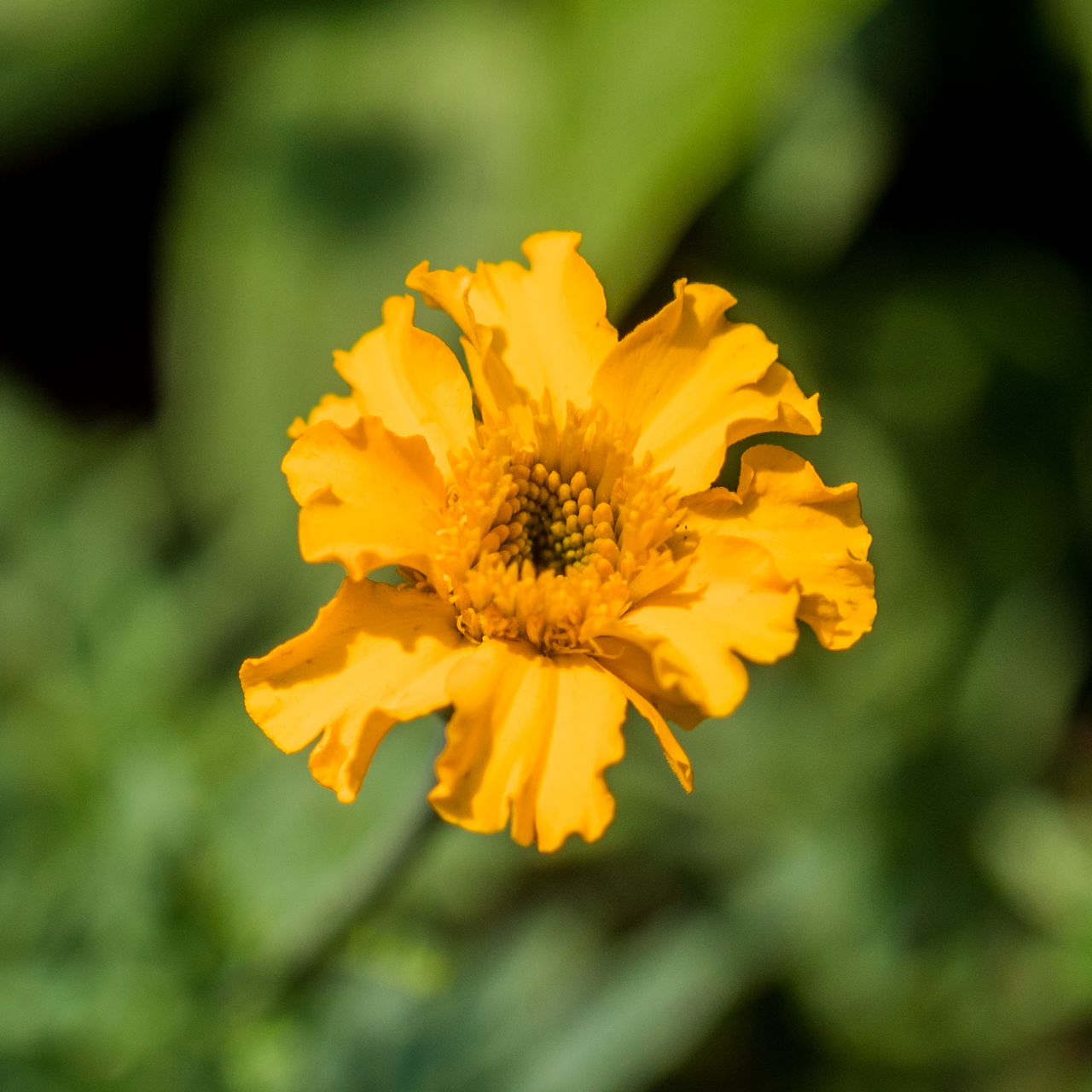

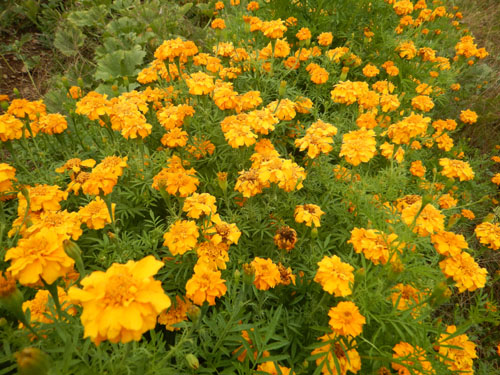
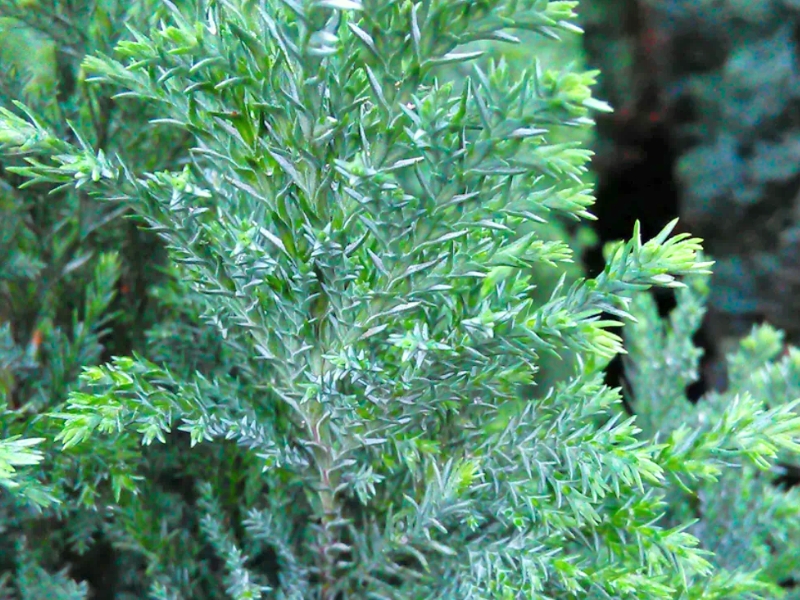

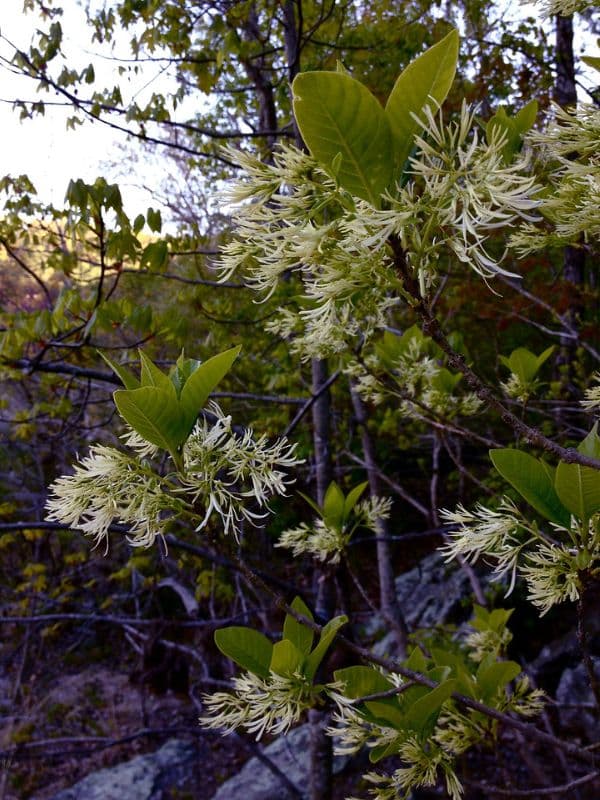
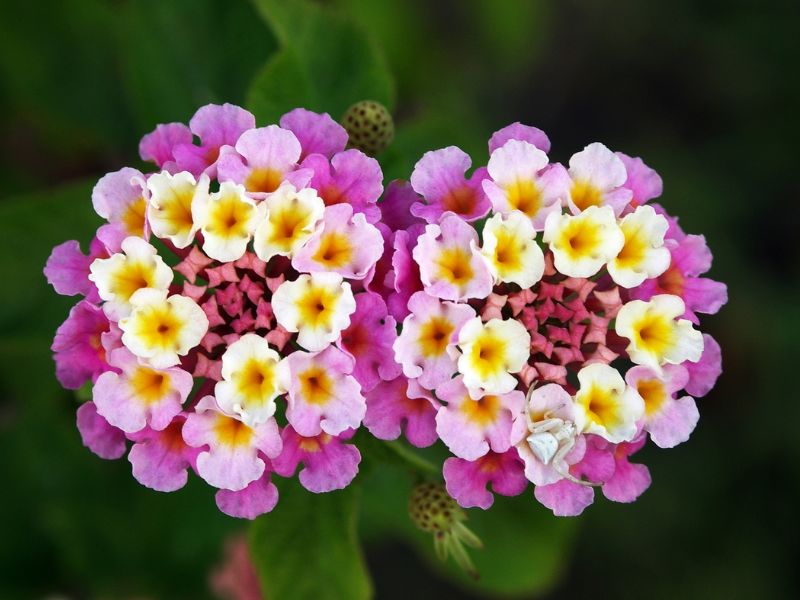
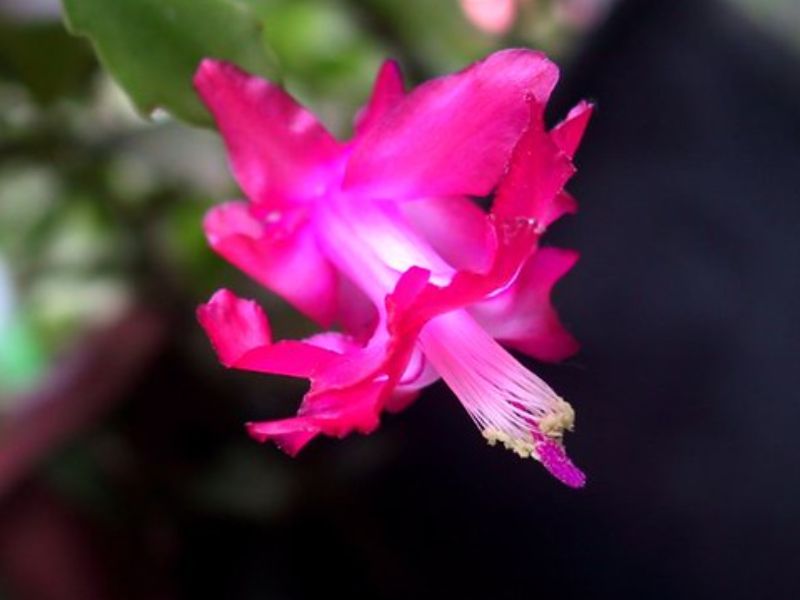
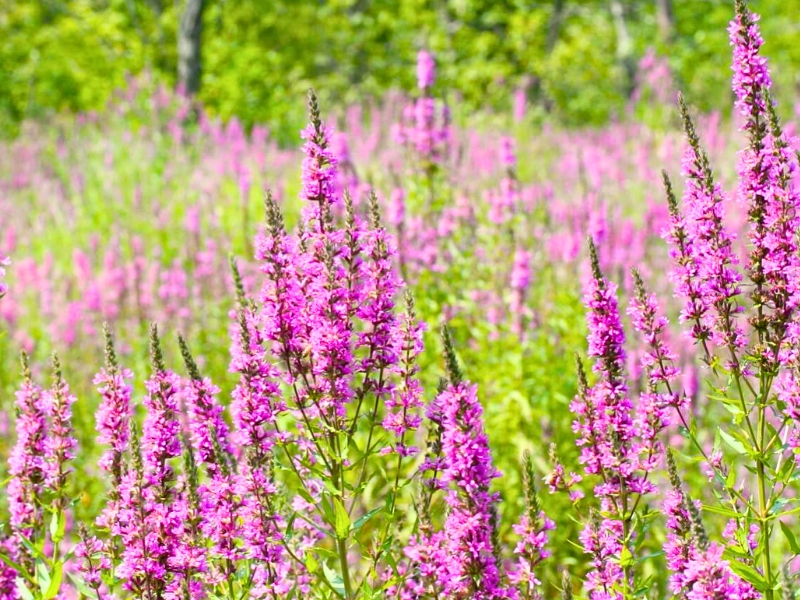
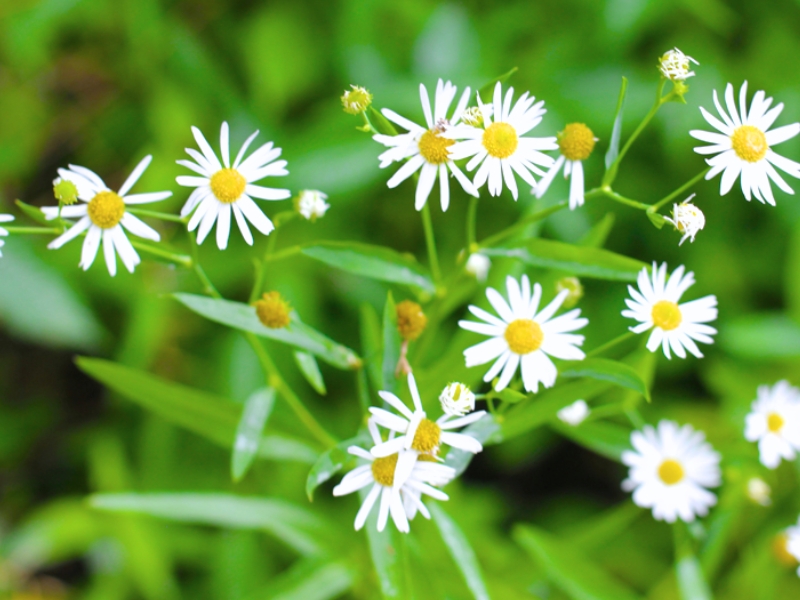
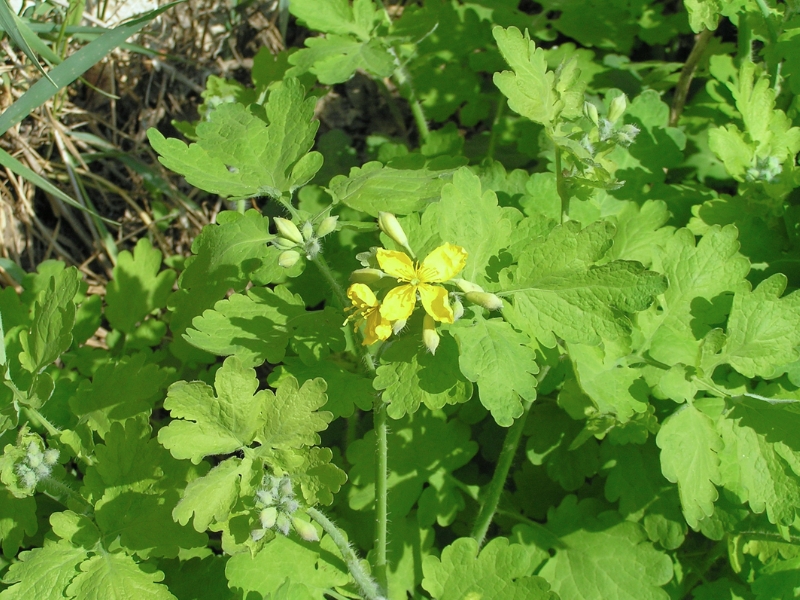
Leave a Reply